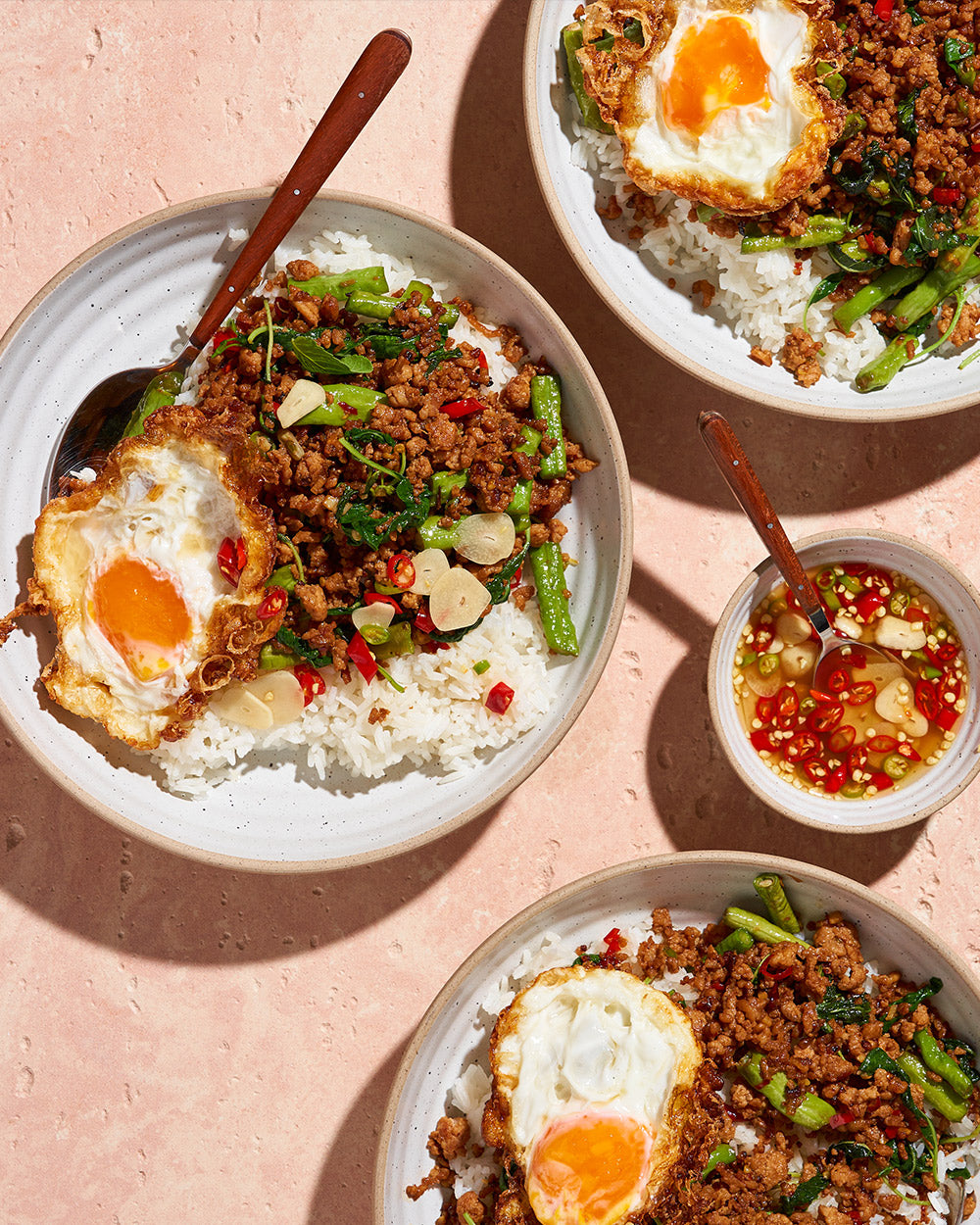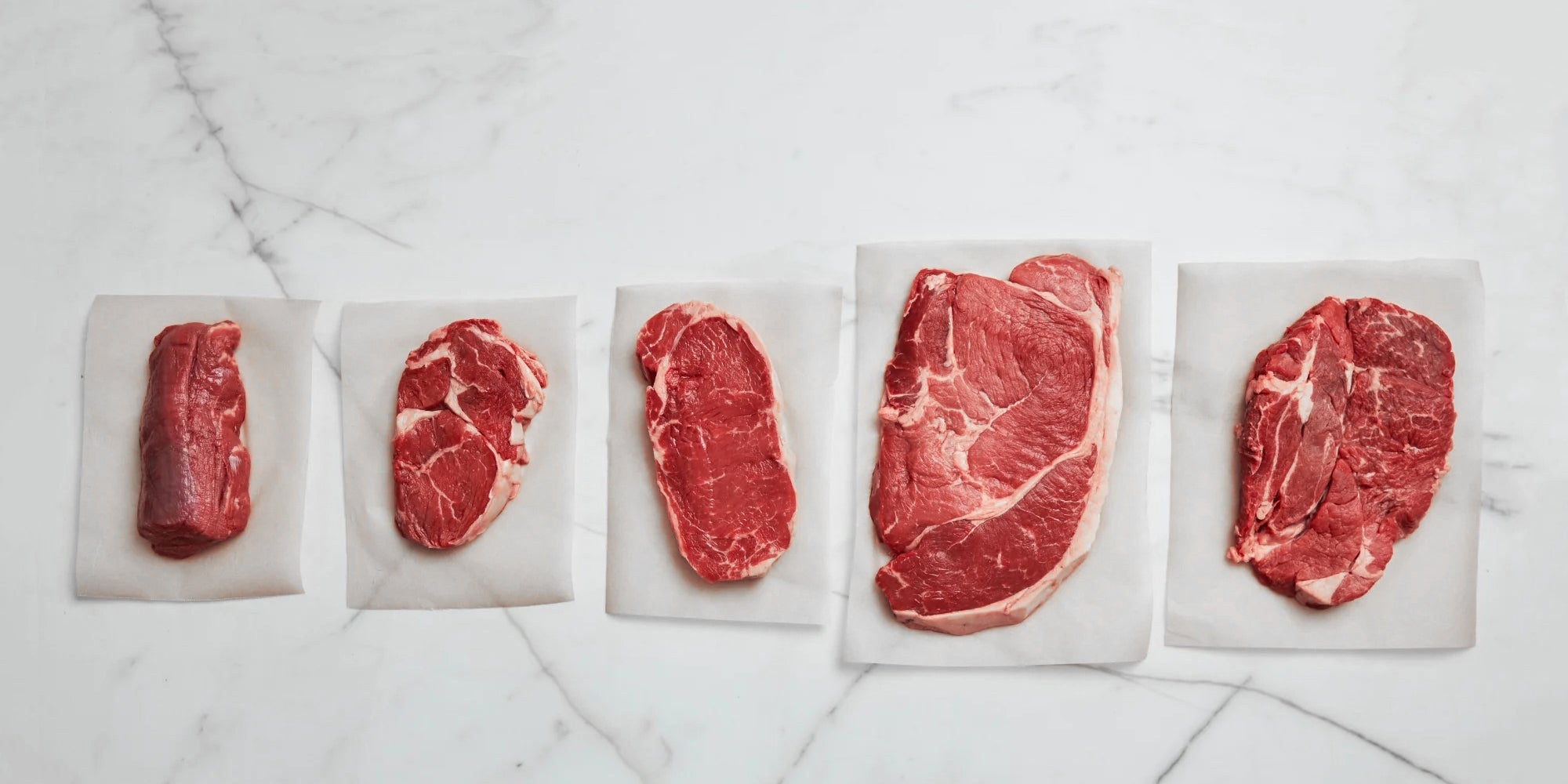
Which steak is the best steak?
Eye fillet, sirloin, ribeye, rump… so many steak cuts, so little time! But what is thebestcut of steak? That’s the eternal question. They all offer something slightly different, even if they get cooked in the exact same way. It can be confusing to choose, but that’s where we come in. Here are some of the most popular (and some of our favourite) cuts of steak.
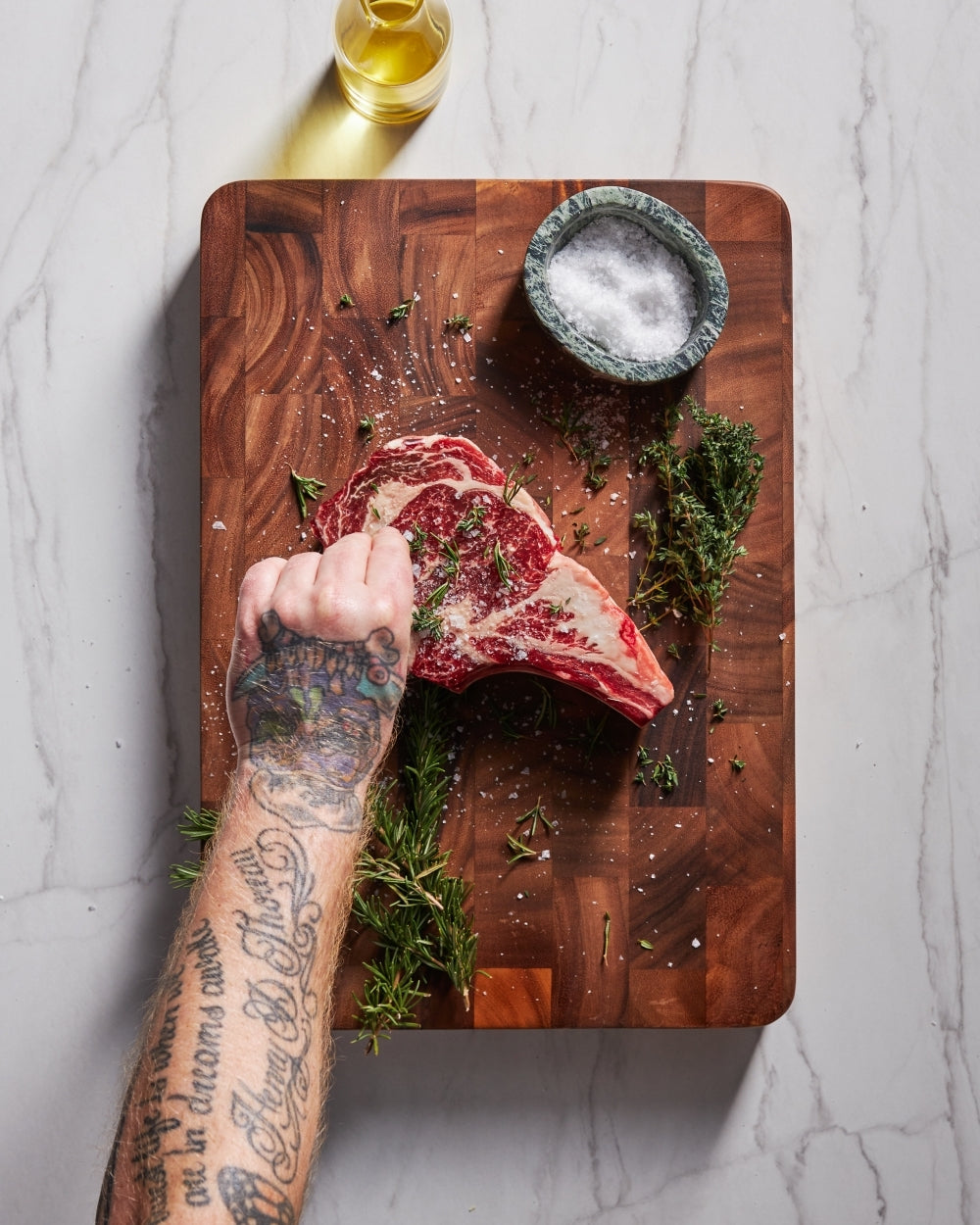
What’s the best cut of steak to cook?
Before we dive into all things beef, it helps to know what makes steak tender. Basically, all meat is muscle. Some muscles work harder than others and the ones that don’t work very hard end up more tender than others, edibly speaking. They have less of the fibres and connective tissue that make meat chewy if not correctly cooked.
All steak cuts are considered lean, tender, quick-cooking meat cuts because they come from parts of the cow that don’t get much of a workout. While all steak is tender, lean and flavoursome, some are more or less so. It comes down to personal preference which are considered ‘better’.
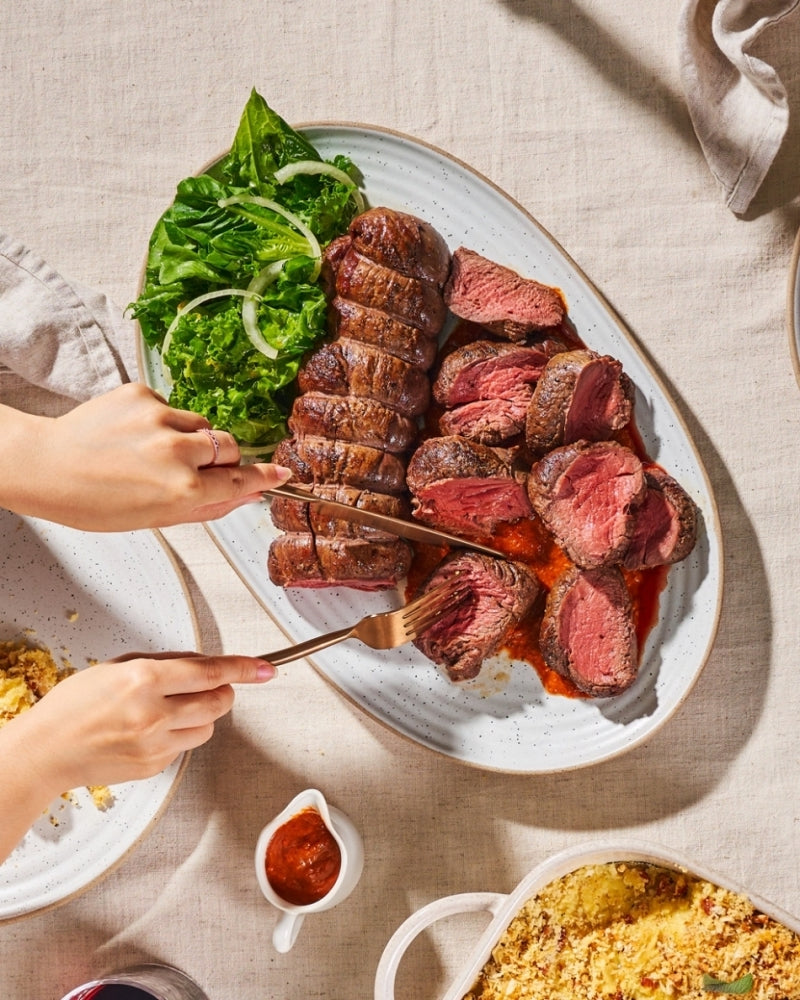
Eye fillet (also called tenderloin)
We LOVE this cut because it’s really lean and very, very tender. It has a milder flavour than other cuts and doesn’t need much prep – just the silver skin (the thin tough outer membrane) removed, and that’s it. You can roast it whole (either in a covered barbecue or hot oven), while tenderloin steaks are best pan-fried or grilled. Never overcook this cut and make sure to rest it well after cooking; it’s best served rare or medium-rare. Any more cooking will make it dry and tasteless.
Sirloin (also called porterhouse or striploin)
A whole sirloin is a large, long piece of meat cut from the back of the animal. You can roast it whole, but it’s common to buy it as steaks. With a characteristic cap of fat and well-marbled flesh, sirloin is popular and for good reason; it’s tender and has excellent, deep flavour. Sirloin steaks are good for pan-frying or grilling and should be cooked no further than medium for the best flavour and juiciness.
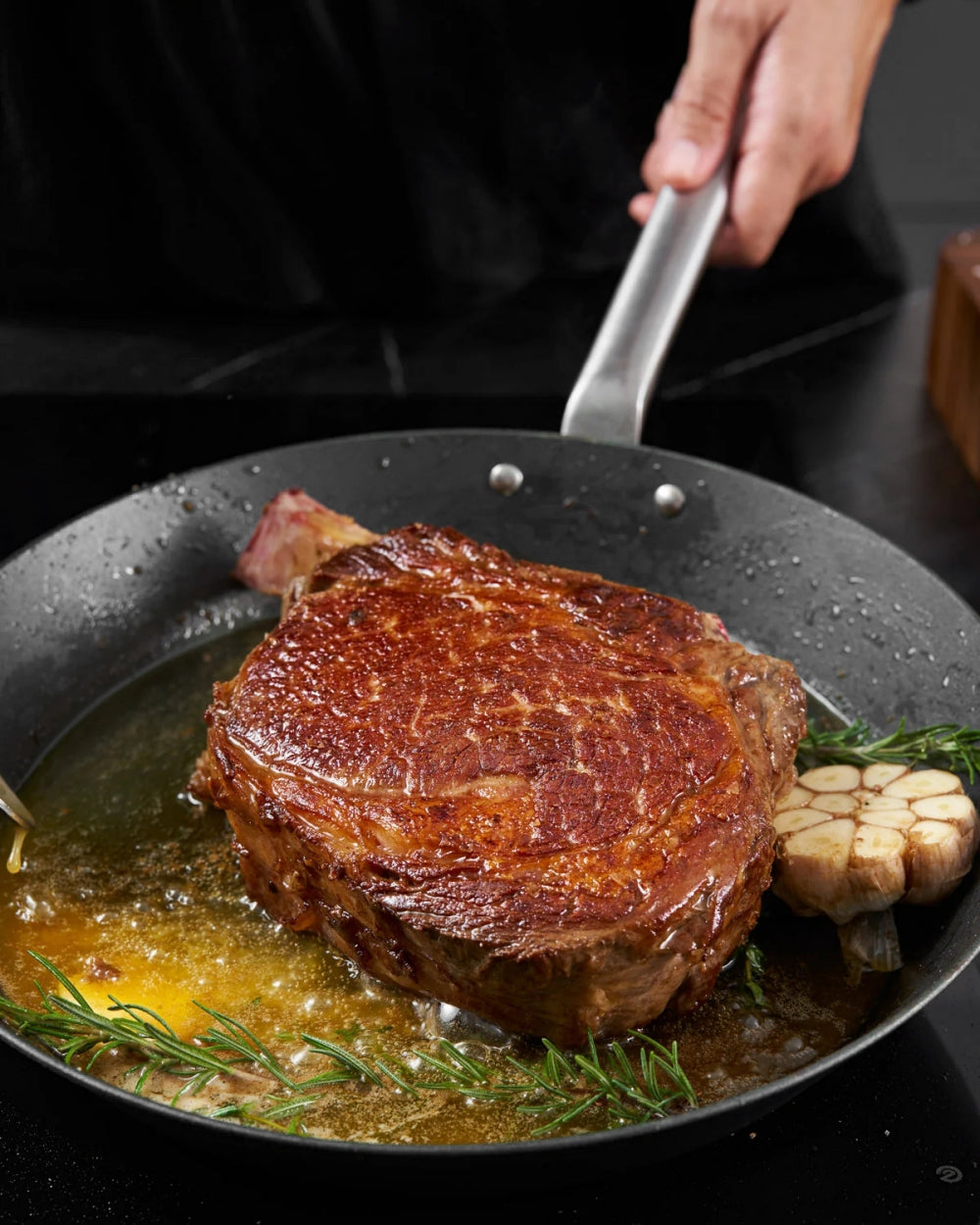
T-bone
An interesting steak, this comprises two cuts; the eye fillet and the sirloin. That’s because it’s literally cut through a ’T’ shaped bone, with the sirloin on one side of the bone and the fillet on the other. Like those cuts, it’s suited to grilling or pan-searing and is particularly tasty. That’s thanks to lots of marbled fat and that yum, on-the-bone flavour.
Rib-eye (also called Scotch fillet)
We hate to play favourites but this may be the steak we love the most. It has such incredible flavour and exactly the right amount of fat. The flesh has a denser texture than say, New York strip, and has a seam of fat running through the meat which keeps it really succulent during cooking. Buy rib-eye either on or off the bone (on the bone it’s often called ‘cowboy cut’) and cook it by grilling, pan-frying, or searing in a pan, then finishing in the oven. A rib-eye steak can be large and thick, making it good to share. FYI a tomahawk steak, which always looks so epic, is ribeye with the rib bone left on and super-long. Because a tomahawk is SO big, it’s best cooked on the barbecue where there is plenty of room to accommodate it.
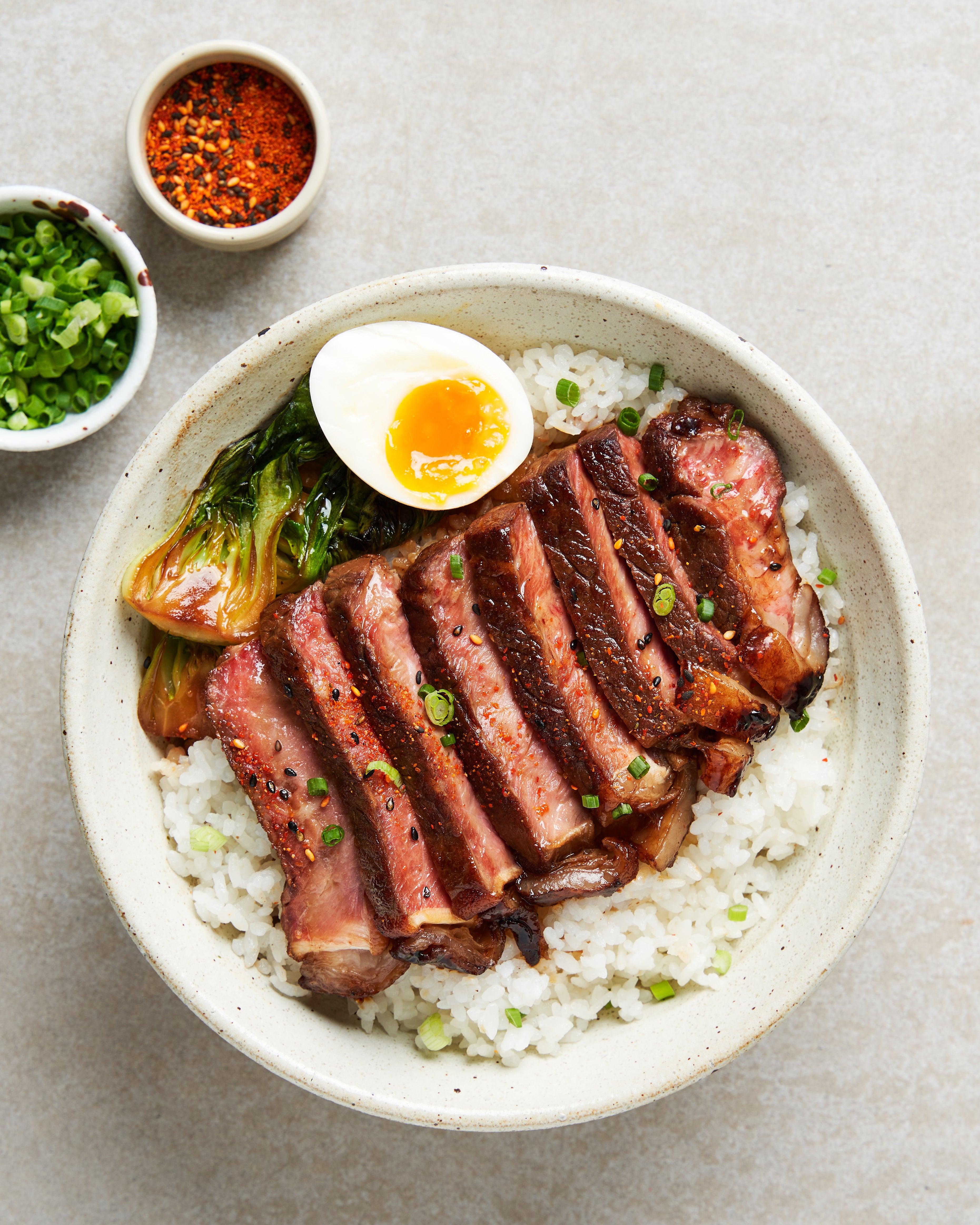
Skirt (also called hangar steak)
Often overlooked, skirt steak is one of two thin, lean, long cuts taken from inside the abdominal wall just under the ribs; the other is flank (also called London broil or bavette), which is similar. These cuts have minimal fat and connective tissue, a coarse grain, super-punchy flavours, and a chewier texture than other cuts. Often skirt steak is cut up for stir-frying as it suits quick, hot cooking. But you can also cook it in larger pieces.
A marinade helps tenderise, after which you just pan-sear it in an extremely hot pan. It’s best undercooked (no more than medium-rare), then rested well before cutting in thick slices across the grain to serve.
Rump (also called round steak)
As the name implies, rump comes from the rear of the animal where it works that bit harder than most other steak cuts. Rather lean, it’s not quite as tender as most other cuts but does offer amazingly deep flavour. It also tends to be cheaper than other steaks. Cut across a cross section of a few different muscles, tenderness can vary even across a single steak. It’s a good cut for marinading, but make sure you blot it dry before cooking or it won’t sear properly. You can pan-fry, grill or cut rump up for stir-frying; whole steaks should be well rested once they’re done to maximise juiciness and tenderness.
MORE COOKING INTEL
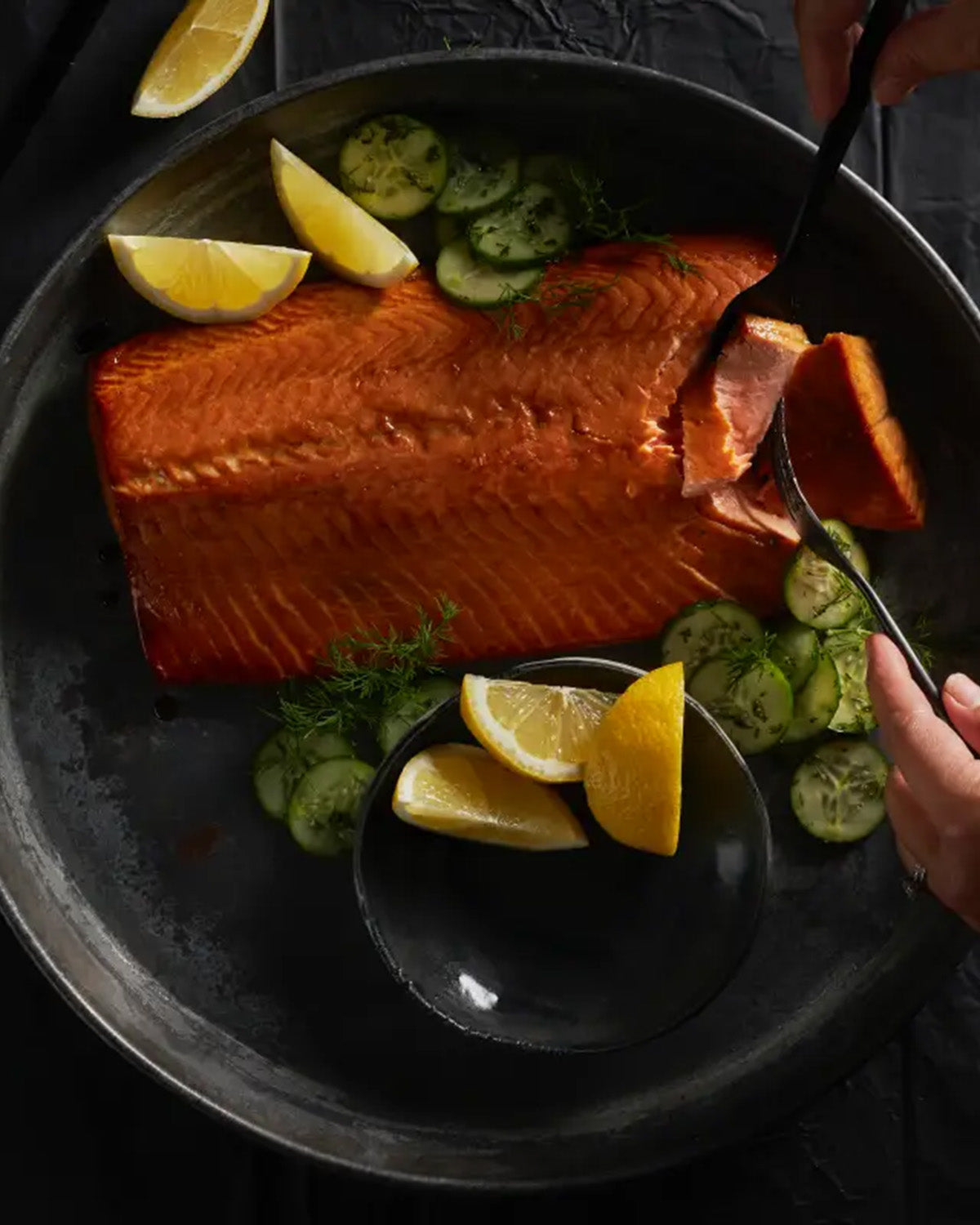
Cooking in your MAKO Wok
The MAKO wok can add flavour, texture, and a unique personality. This tea-smoked salmon recipe proves it.
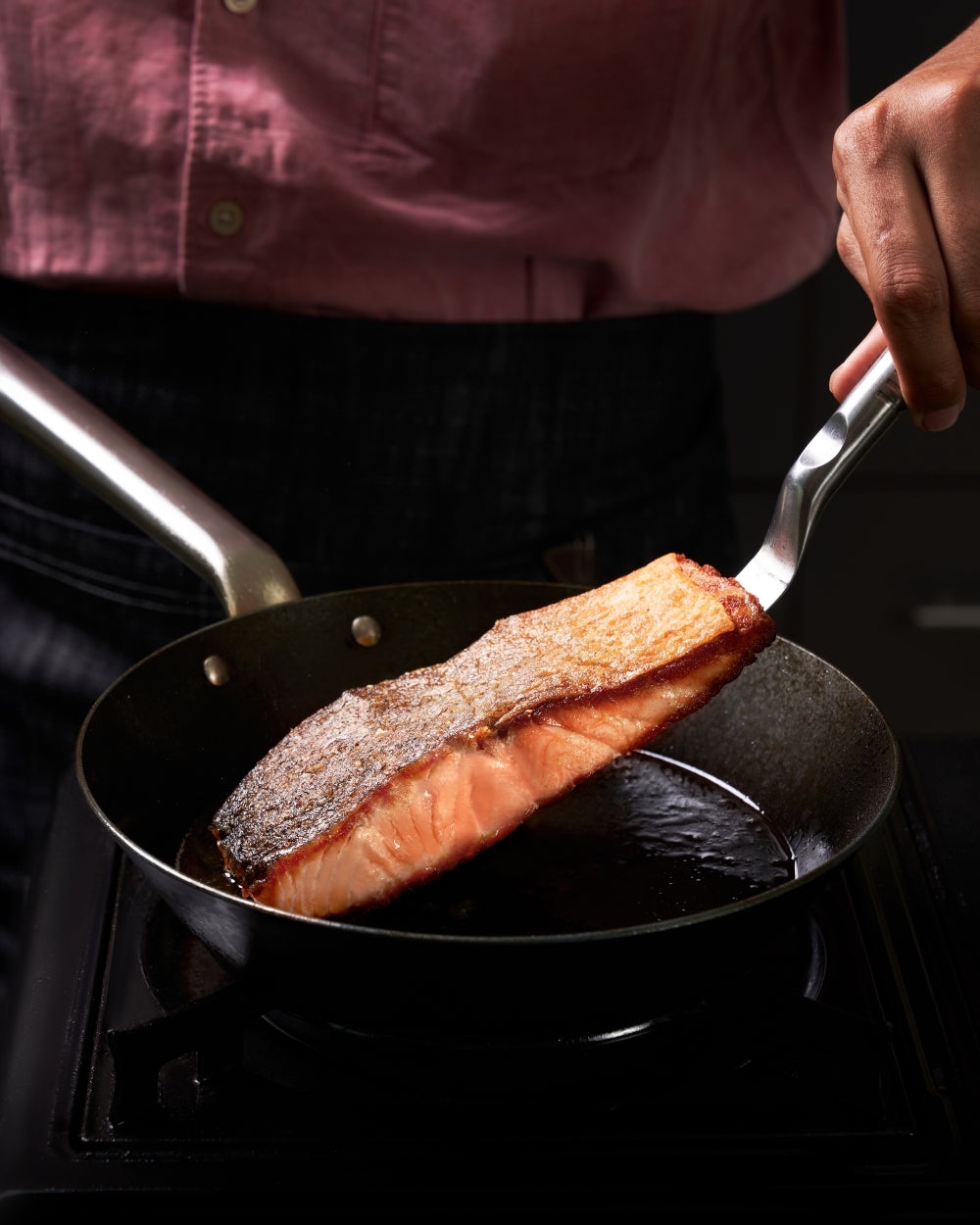
How to get crispy-skinned salmon
